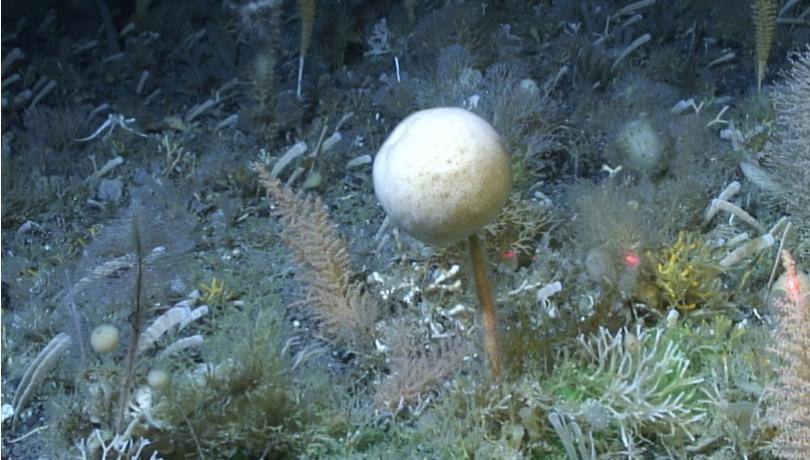In the "In Depth" section of this December's newsletter, we tell the story of the discovery, by a group of ICM researchers, of a very special sponge from the frozen continent.

Sponges are one of the most common benthic organisms -those that live near or in contact with the seabed- on the Antarctic seabed. There are many, and they are very diverse, but today we want to tell you about a special case, that of a species almost as sweet as the desserts that we enjoy in Christmas meals these days: the «Chupa Chups sponge».
It was discovered by a group of researchers from the Institut de Ciències del Mar (ICM) and the Centre d’Estudis Avançats de Blanes (CEAB) in 2010 and receives its name because of its shape, which resembles to the famous lollipops.
They gave it this name in honour of their children, who are the ones who suffer most from the consequences of mothers and fathers spending months away from home on oceanographic expeditions. These are sometimes carried out in remote areas of the earth, where communication with other places is difficult, weak, and interrupted, making it impossible to keep in touch with family members.
Discovered by chance
The first specimen of the 'Chupa Chups sponge', whose scientific name is Stylocordyla chupachups, was collected in 2000 during a campaign in which the ICM researcher Josep Maria Gili took part. “At first we thought it was another species common in Antarctic waters, Stylocordila borealis, but then we realised that it was a species that no one had described before”.
"We call it by this name because of its resemblance to the caramel and to thank our children for letting us do what we love and are so passionate about, which is marine research, a job that sometimes forces us to move away from them," adds the researcher, who confesses that it was not until they arrived at Barcelona that, thanks to the structure and morphology analyses carried out in the ICM laboratories, they realised they had a new species in their hands.
This fact also corroborated a hypothesis that the research team had long held: that many Antarctic species are endemic, that is, they are found only in this remote part of the Earth.
Sponges, the queens of Antarctica
Sponges account for about 75% of the biomass of benthic communities in Antarctic seas, making them one of the main invertebrate groups there. Most species are found between 100 and 200 metres depth, where they can form mats hundreds of metres long.
In particular, the ‘Chupa Chups sponge’ prefers to settle on horizontal or sloping surfaces at depths of 150-300 metres. Like most Antarctic sponges, it is characterised by long bundles of silica spicules which in other species have no use, but in this case help to separate the sponges from the seabed and enable them to capture the food falling through the water column more easily than other species.
The reason they have these structures is that they absorb a large amount of silica, which leads them to make much more skeleton than they need, so much so that it comes out of their bodies.
"This is an unfinished experiment in evolution. There is not yet the knowledge to explain it, but surely one day they will find a species of sponge that will know how to take advantage of this fact that may seem useless now, but that one day will be a great discovery of nature," advanced the ecologist Ramon Margalef when Josep Maria Gili asked him about the usefulness of the silica spicules characteristic of Antarctic sponges the first time he saw them, and he was not wrong.